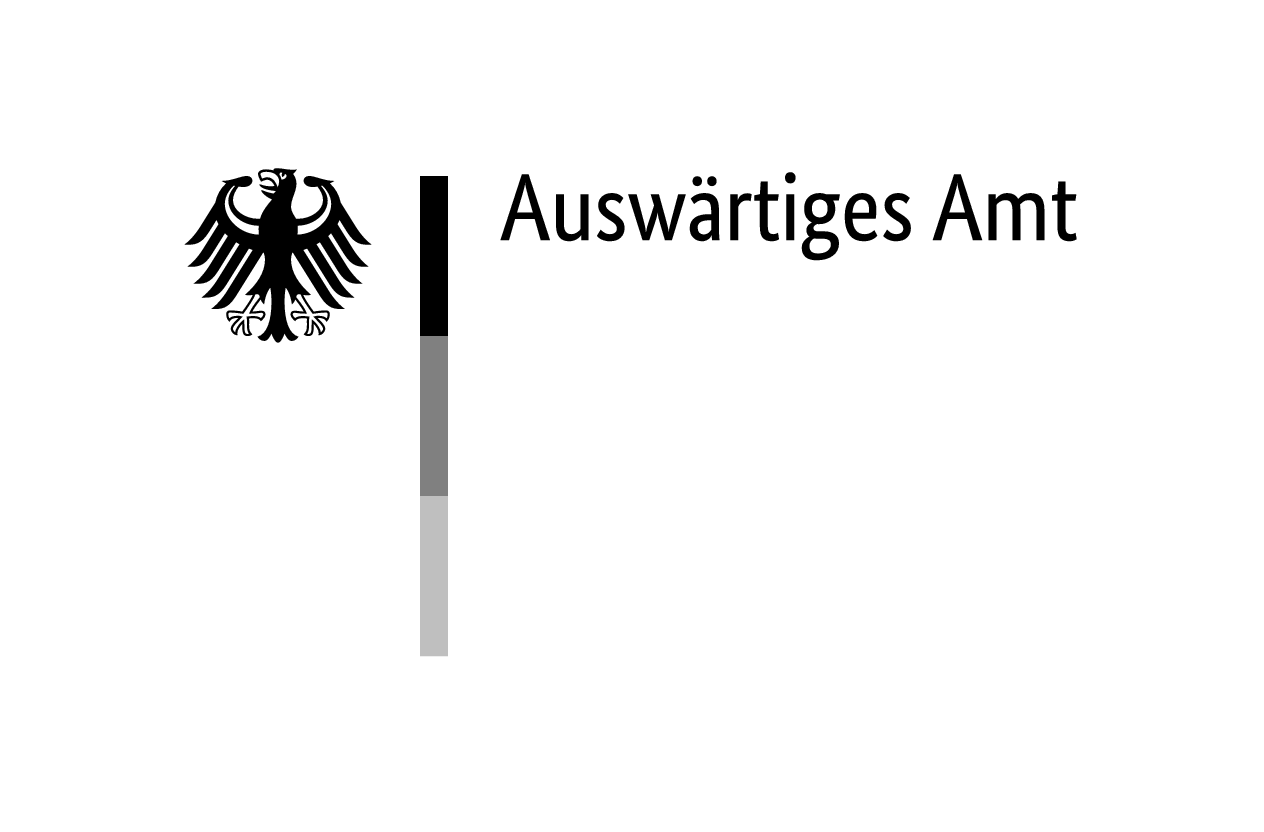In Mechelen, a city in the Belgian province of Antwerp, the ‘SS transit camp for Jews’ was set up in the Dossin barracks during the German occupation. It was the only transit camp for ‘racially’ persecuted people on Belgian soil; the deportation of the Jewish population took place from here, as did the deportation of Sinti and Roma from Belgium and northern France.
History of the Dossin Barracks
As a result of the War of the Spanish Succession (1680–1701), the city of Mechelen came under the rule of the Austro-Hungarian Empire. In 1756, Empress Maria Theresa of Austria (1717–1780) ordered the construction of the barracks. In 1781, under Emperor Joseph II of Austria, ownership of the barracks was transferred from the city to the state. It continued to serve military purposes, regardless of the changing powers or the various regiments that used it. In 1936, the building was renamed the Dossin Barracks in honour of Lieutenant General Émile Dossin de Saint-Georges (1854–1936), a Belgian hero of World War I. There is no information about what happened there during the first years of the German occupation from May 1940 to July 1942.
Establishment of an ‘SS Transit Camp for Jews’
On 15 July 1942, the German military administration made the barracks available to the Security Police (Sipo-SD) to set up an ‘SS transit camp for Jews’ there. The barracks were suitable as a transit camp for several reasons: the building, which was arranged around a square courtyard, was easy to monitor. The main entrance was wide and high enough to allow lorries to drive into the courtyard and park there. The building was also large enough to hold around 2,000 prisoners. It was located halfway between the cities of Brussels and Antwerp, where more than 90 per cent of the country’s Jews lived. It was also located on a railway line and a transport hub to the east was not far away.
The transit camp was put into operation on 27 July 1940. It played a central role in the deportations in Belgium and northern France. Philipp Schmitt (1902–1950), in charge of Fort Breendonk, a campfrom August 1940 to November 1943, was responsible for the transit camp in Mechelen from July 1942. He was dismissed from his post by his superior Ernst Ehlers (1909–1980) for personal enrichment and fraud and replaced on 9 March 1943 by SS-Sturmscharführer Gerhard Johannes ‘Hans’ Frank (1905–unknown), a former policeman who was a member of Department II of the Sipo-SD in Brussels. Ehlers was in charge of carrying out the ‘Final Solution’, i.e. the murder of Jews in Belgium, as a representative of the head of the Sipo-SD.
Originally, the camp was only intended for Jews. By October 1943, when Sinti and Roma were also admitted to the camp, more than 22,000 Jews had already been deported to the Auschwitz-Birkenau concentration and extermination camp. By the time Mechelen was liberated, more than 25,000 Jews had been deported from the camp.
Arrest and Incarceration of Sinti and Roma
From the second half of October to the beginning of December 1943, Sinti and Roma were arrested in Belgium and northern France and taken to the Dossin barracks in preparation for their deportation to Auschwitz-Birkenau. The arrests appear to have been coordinated by the military commander for Belgium and northern France. There are no files on this, but the timing of the arrests, the committal to the Dossin barracks and the final destination of Auschwitz-Birkenau suggest that this was the case.
The modus operandi was almost always the same: men in German uniforms, usually members of theFeldgendarmerie, combed through the settlements or neighbourhoods where Sinti and Roma lived in the early hours of the morning. In northern France, the local police took part in the arrests. Wielding firearms, they ruthlessly forced entire families into lorries. The Sinti and Roma from northern France were then taken to the prisons of Loos-lez-Lille, Arras and Béthune before being sent to the transit camp in Mechelen. Sinti and Roma who were arrested in Belgium also passed through prisons such as Hasselt in Limburg or Saint-Gilles in Brussels before arriving at the camp.
The Sinti and Roma who had been arrested were registered separately on a deportation list labelled ‘Z’. On 6 December 1943, there were already 166 names on the ‘transport list Z’. On 9 December, 182 names were added. Three more people, who were taken to Mechelen on 7 and 12 January 1944, are the last names on the list. The number of children under the age of 15 totalled 165, making up more than half of those arrested.
The entries date from between 5 November 1943 and 12 January 1944. These dates do not necessarily correspond to the date of arrival, but rather to the passage of the German criminal police (Kripo) through the transit camp. Two officers from the Kripo and two clerks from Department V of the Security Police from Brussels came to Mechelen to register the deportees. According to a statement made by Johannes Frank, the commandant of the transit camp, in 1946, the officers of Section V and a ‘race expert’ registered, fingerprinted and photographed the Sinti and Roma.1Auditorat militaire [Military Prosecutor’s Office], Procès Boden [Boden Trial], Farde 1, Section IV-B—PV d’auditions de sujets allemands [Section IV-B—Interrogation protocols of German nationals], doc. n° 17, Déclaration de Gerhard Johannes Frank [Document no. 17, Declaration by Gerhard Johannes Frank], Zwolle, 27 October 1946. These documents have yet to be located.
Situation of the Detainees
A total of 352 Sinti and Roma were crammed into one or two dormitories on the first floor of the barracks above the kitchens.2Schram, Dossin, 254. These rooms each had a maximum capacity of 150 people. The inmates were locked up there together regardless of age and gender and were under the constant watch of an SS man.3Private archive of Monique Heddebaut, telephone interview with Eva Fastag, 26 December 2005 and correspondence from 18 January 2006. Only very few were able to sleep on a bedstead; the majority had to lie on mats on the floor. More than half of the prisoners were children under the age of 15.
The sanitary conditions were catastrophic. Unlike the Jewish detainees, the Sinti and Roma had no access to washbasins or toilets. They had to relieve themselves in buckets. The straw mats, which had not been changed since the camp opened, were full of vermin. In contrast to the Jews, many of whom had been prepared for their supposed ‘labour deployment in the East’—a camouflage term for deportations to extermination camps—and had luggage with them, the Sinti and Roma wore the clothes they were arrested in and did not have a change of clothes. The SS (Schutzstaffel) forced them to remain in the dirt, stench and cramped conditions. The SS sometimes took them to the washrooms, forced them to undress and then poured buckets of hot water over them.4Beer, Salle 1, 43.
The Sinti and Roma were strictly isolated from the other prisoners within the camp. While Jewish prisoners received food parcels from the Association des Juifs en Belgique [Association of Jews in Belgium], Sinti and Roma were left without support from outside the camp and had to make do with the meagre camp rations. One exception was the Winterhulp [Winter Relief], which was founded in October 1940 and bundled the relief efforts of the Belgian Red Cross and other charitable organisations and also provided the imprisoned Sinti and Roma in Mechelen with food.
However, these donations remained rare and could not even come close to ensuring an adequate supply. In view of the hunger and growing distress, some Jewish prisoners and a Hungarian SS man took the risk of getting additional food for the Sinti and Roma.5Kazerne Dossin, audio cassette, interview with Eva Fastag, conducted by Frédéric Molle, Strasbourg, 7 May 1997; private archive of Monique Heddebaut, interview with Antoine Lagrené, conducted by Monique Heddebaut, 5 November 2005; private archive of Monique Heddebaut, interview with Joséphine Lagrené, conducted by Monique Heddebaut, 23 April 2006.
The daily mistreatment of the Roma by the SS guards was so brutal that even Jewish detainees—who themselves experienced severe violence—were shocked.6Schram, Dossin, 254, 257. According to the testimony of Maurice (Mojzesz) Heiber (1908–unknown), a Jewish prisoner, camp commandant Johannes Frank gave instructions to treat the ‘Gypsies’ worse than Jews and even went so far as to refuse milk to children.7Auditorat militaire, Procès Boden, Farde 2, Section VIII—Témoins généraux (H), doc. n° 9, Déposition de Heiber Mojzesz, Bruxelles, 25. Jeanne Modis-Galut (1925–1997) recalled that the SS men inflicted violence on mothers when children soiled their nappies: they forced them to bend over a table and gave them lashes on the kidneys.8Study and Documentation Centre for War and Contemporary Society (CegeSoma), Anderlecht, interviews by José Gotovitch with Jean (Yayal) Galut-Modis, Jeanne (Paprika) Galut-Modis, Paris, 2 April 1976.
Every day, the SS guards drove the Sinti and Roma out of their dormitories into the barracks courtyard for a ‘walk’ of less than an hour. These outings were characterised by humiliation and violence and took place at random times, sometimes in the morning, sometimes in the afternoon, but always in strict separation from the Jewish detainees. The SS guards forced some musicians to play the violin, while other inmates, mainly women and children, were harassed by the guards.9Beer, Salle 1, 42–43; United States Holocaust Memorial Museum (USHMM), 2006.245, Dr Frank J. Parnes, Um die Welt in zehn Jahren, 30. The SS then took the people back to the dormitory.
On 11 December 1943, a child was born in the Onze Lieve Vrouw Gasthuis, a hospital opposite the barracks, in the midst of the terrible prison conditions. Camp commandant Frank authorised the transfer of 23-year-old Rosa Demestre (1920–unknown) to give birth there.10Mechelen city magistrate, registry office, birth certificate of Jeanne Demest, alias Jacqueline Vadoche, Mechelen, 11 December 1944. The newborn had two names: Jeanne Demest on the birth certificate and Jacqueline Vadoche on the ‘transport list Z’. Her parents, Rosa and Auguste Vadoche (1918–unknown) are entered on the list together with their other children, Luva (1940–1944) and Joséfine (1942–1944). Jacqueline Vadoche was only 35 days old at the time of her deportation. The infant was the youngest prisoner to be deported from the Dossin barracks.
Deportation to Auschwitz-Birkenau
On 15 January 1944, just over 1,000 people were loaded into cattle wagons in Mechelen. One section of the train, labelled ‘Transport XXIII’, contained Jewish prisoners, and another section, labelled ‘Transport Z’, contained 352 Sinti and Roma.
Hélène Beer, a Jewish prisoner who escaped deportation and was liberated in Mechelen, recalled the deportation of the Sinti and Roma, who ‘[…] had been locked up behind bars for a month, held at bay by a machine gun, robbed of their gold rings and violins, shipped off with the Jews. […] They left, even poorer than the Jews, without luggage, an even more desolate flock, even more trembling, even more resigned.’11Beer, Salle 1, 25–26. Elsewhere, she reports that the SS selected some Jewish women and forced them to clean the abandoned dormitories. This gave them an impression of the unbearable conditions which the Sinti and Roma had had to endure for a month, crammed together in dark rooms with closed windows, a terrible stench due to the lack of toilets, torn mattresses and barely usable crockery.12Ibid., 42–44.
Mechelen Memorial
After World War II, the barracks once again became the property of the Belgian state. But after the authorities based there moved out in 1975, it fell into disrepair and became little more than a ruin. The building became the property of the city of Mechelen in 1977 and was converted into luxury flats in the 1980s, despite its history. It was the Union des Déportés Juifs de Belgique—Filles et Fils de la Déportation [Union of Deported Belgian Jews—Daughters and Sons of the Deportation] and the Consistoire central israélite de Belgique/Centraal Israëlitisch Consistorie van België [CCIB, Central Israelite Consistory of Belgium], who urged the city of Mechelen, the Flemish Community of Belgium and the Belgian federal government to see that part of the barracks was preserved as a museum. Natan Ramet (1925–2012), a survivor of the Auschwitz and Dachau concentration camps, was appointed president of the initiative. Finally, on 7 May 1995, King Albert II (born 1934) officially opened the Joods Museum van Deportatie en Verzet (JMDV)/Musée Juif de la deportation et de la résistance (MJDR) [Jewish Museum of Deportation and Resistance]. The museum has been open to the public since 11 November 1996.
In 2009, the historians of the JMDV and La Coupole, Centre d’Histoire et de Mémoire du Nord-Pas-de-Calais, created a travelling exhibition and a catalogue entitled ‘Disparus de la Terre’ [Missing from the Earth].13Le Maner, Steinberg and Schram, Disparus de la terre, not paginated. The panels were designed so that they could be set up in places with heavy public traffic, such as Lille town hall or railway stations. The exhibition sheds light the history of the Jews, Sinti and Roma who were arrested in northern France and deported from the Dossin barracks, the role of the local authorities and how these victims can be given back their face, identity and dignity.
The Jewish Museum was later taken over by the Flemish Community and renamed Kazerne Dossin. The first part of the museum complex, the memorial in the historic barracks, was opened on 4 September 2012 by Flemish Prime Minister Kris Peeters (born 1962) and the Mayor of Mechelen, Bart Somers (born 1964). The memorial is located in the front wing of the barracks. The second part, a new building housing the museum, is located opposite the barracks and was also opened on 26 November 2012 by Flemish Prime Minister Kris Peeters in the presence of King Albert II. Since then, both buildings have borne the name ‘Kazerne Dossin—Memorial, Museum and Documentation Centre for the Holocaust and Human Rights’. Following renovation work, the memorial reopened its doors on 27 January 2020.
Permanent Exhibition
The permanent exhibition at the Kazerne Dossin takes into account the history of the Sinti and Roma in Belgium and northern France from the 1930s to 1945. Sinti and Roma are represented in the new museum building on a huge ‘wall of portraits’ of deportees from the Mechelen transit camp. Thanks to research by the museum team, donors and families, it has been possible to add photographs of deportees every year. As of February 2024, there were 20,629 portraits of Jews and 125 portraits of Sinti and Roma who were deported to Auschwitz-Birkenau.
After the term ‘Gypsy’ was initially used in the permanent exhibition in 2012 without contextualisation, a critical examination of the question of an appropriate term for this group of victims has taken place in recent years. In 2020, the texts were adapted in all three languages (French, Dutch and English): Kazerne Dossin uses ‘Roms’ in the French texts and ‘Roma’ in the Dutch and English texts. In the German booklet, the museum decided in favour of the term Sinti and Roma. The changes were adopted both in the catalogues and by the memorial.14Kazerne Dossin, Kazerne Dossin, 146–71; Kazerne Dossin, Musée Kazerne Dossin, 146–71.
Memorial Plaques and Commemorations
Since 1948, a memorial plaque on the façade of the historic barracks has commemorated the deportation of the Jews from Mechelen. The plaque is the result of an initiative by the association of former prisoners. It took almost 50 years before another plaque was placed next to it on 3 June 1995, commemorating the imprisonment of Sinti and Roma in Mechelen and their deportation.
The initiative came from the Vlaams Overleg Woonwagenwerk (VOW), which represents the interests of caravan dwellers, and the CCIB.15Kazerne Dossin, interview with Michel Laub, secretary of the Central Israelite Consistory of Belgium, conducted by Laurence Schram, 14 March 2022; Saerens, “Mechelen: de Dossinkazerne,” 244. The text on the plaque is in Dutch and French and reads: ‘Victims of prejudice and discrimination. Roma, Manouches, Gens du voyage, 3 June 1995’. This plaque is the only one in Belgium to date that commemorates the genocide of the Sinti and Roma.
Since 1956, an annual commemoration dedicated solely to the Jewish victims has been held in Mechelen around 4 September. In 2020, the deportation of Jews, Sinti and Roma from northern France was commemorated together for the first time, thanks to one of the museum guides and a teacher from Aire-sur-la-Lys. After the Covid-19 pandemic interrupted commemorations for some time, it is planned that the Kazerne Dossin will continue to commemorate both victim groups together. The commemorations will take place on the most important dates, for example on 15 January, the day of the departure of ‘Transport Z’ in 1944.




